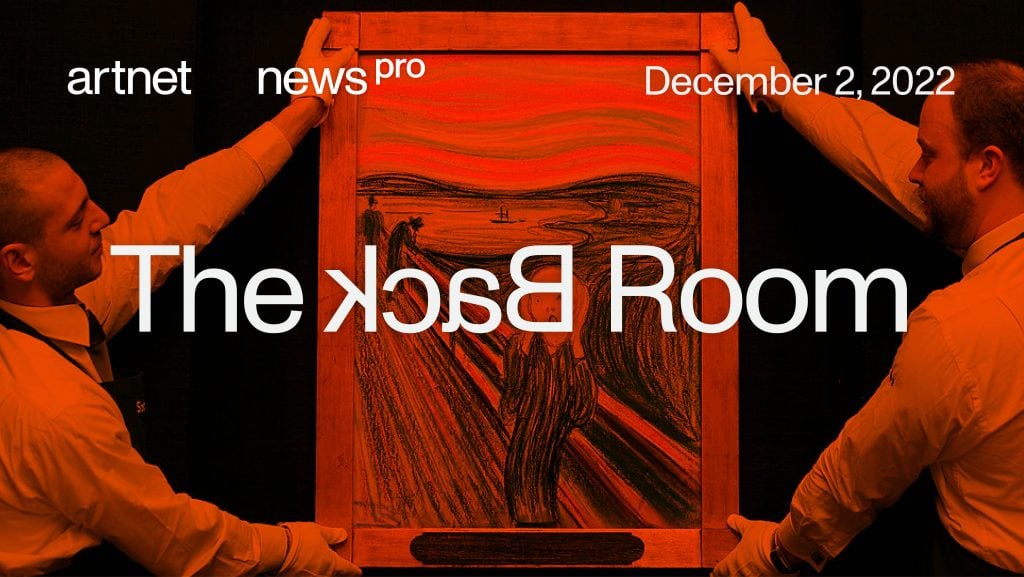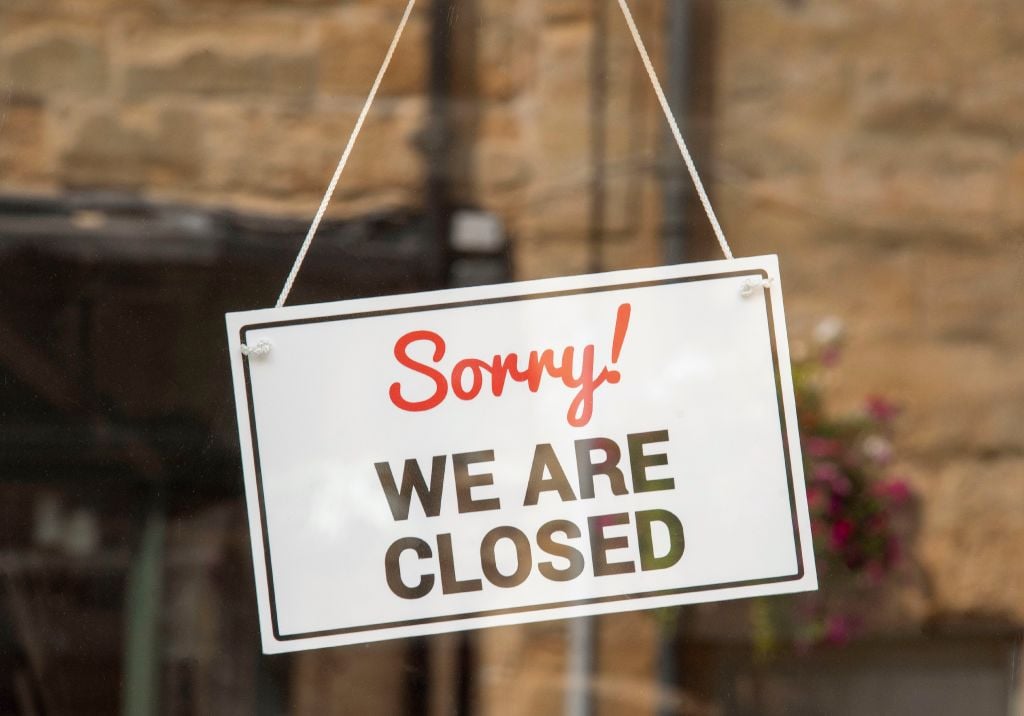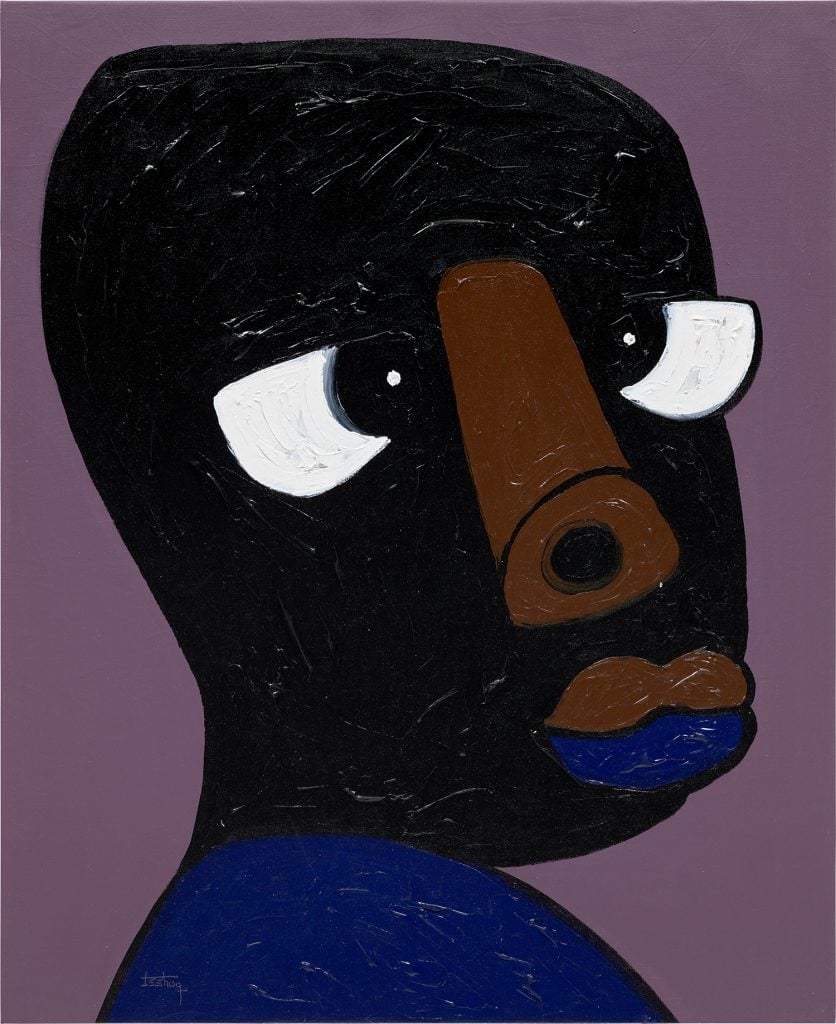The Back Room
The Back Room: Recession Ready
This week: how to know when the art market is headed for a recession, early sales from Art Basel Miami Beach, a speculative bubble bursts, and much more.

This week: how to know when the art market is headed for a recession, early sales from Art Basel Miami Beach, a speculative bubble bursts, and much more.

Naomi Rea &
Julia Halperin

Every Friday, Artnet News Pro members get exclusive access to the Back Room, our lively recap funneling only the week’s must-know intel into a nimble read you’ll actually enjoy.
This week in the Back Room: How to know when the art market is headed for a recession, early sales from Art Basel Miami Beach, a speculative bubble bursts, and much more—all in a 6-minute read (1,831 words).
__________________________________________________________________________

Photo by: Peter Titmuss/UCG/Universal Images Group via Getty Images.
“Can you feel that?” said one art dealer, arms akimbo, as we stood in the aisle at the Miami Beach Convention Center this week. “There’s no drama!”
For him, the lack of frenzy—no furious phone calls being made with hands over mouths, no overextended dealers wiping sweat from their brows—indicated that the art market is on the precipice of a slowdown. Of course, an ambient vibe is not a scientific analysis. But he was far from the only person looking around the corner for signs of what’s to come.
After three years of booming business, the sluggishness infusing the rest of the economy may finally be catching up to our industry, which is notoriously slower to feel macroeconomic cramps. Beneath the headline figures, the performance of last month’s New York auctions was middling at best. Meanwhile, early reports of sales at Art Basel Miami Beach were measured (more on that below).
We reached out to a range of experts—many of whom were around for the Japanese stock-market crash of 1990 and the 2008 recession—to ask for the signs they look for as harbingers of an art-market contraction. Here are the highlights—and our verdict on whether they apply right now.
“The most telltale sign is that everyone is murmuring about it sotto voce—at openings, art fairs, gallery dinners…everywhere,” said art advisor Liz Parks.
Verdict: Yes. You’re reading this right now, aren’t you?
A key to determining market sentiment, said former auction executive David Norman, is “noting the number of underbidders, particularly for lots with third-party guarantees; when in doubt, I rewatch lots on YouTube.”
Verdict: Yes. Aside from the Allen sale, many of the trophy works at the November sales went to their guarantors.
“As auction guarantees are offered up to six months prior to the sale, I watch to see how much is invested and then sold off to get the best indicator in the health of the market,” noted former Christie’s executive Caroline Sayan.
Verdict: Yes. After Christie’s ponied up the guarantee for the Allen Collection, it found third-party backers for 33 works—cumulatively valued at almost $1 billion—before the sale.
“Established art acts as a safe haven for value preservation in uncertain times like this,” said art advisor Thomas Stauffer. “The massive success of the record sale of the Paul Allen Collection with blue-chip art is the evidence of that.”
Verdict: Kind of. The Allen Collection surpassed expectations, but sales during this week’s art fairs showed strong demand for lower-priced work by emerging artists.
“Results of day sales at auctions are the best reflections of the market sentiment,” said art advisor Gladys Lin. “The differences between the final sale price and the presale estimates of individual lots best indicate whether the market is pessimistic.”
Verdict: Split. Of the eight major day sales in New York last month, four hammered under estimate and four hammered over estimate, according to analysis by Live Art.
“If the super-rich believe we are heading into a down-cycle, they expect discounts,” said Evan Beard, a former Bank of America executive.
Verdict: Not really, according to a few dealers we polled. People who wanted discounts last year still want them this year.
“During the summer of 2008 I was conducting my habitual round of charity auctions including some in the Hamptons,” auctioneer Simon de Pury wrote in his latest Artnet News Pro column. While the affluent guests at these galas are typically generous, this time around “they were not bidding, and getting bids felt like extracting teeth.”
Verdict: No. De Pury said that his latest charity auctions have performed well, which quelled his anxieties.
“The most important condition of this recent art-market boom is the external need of ultra-high-net-worth individuals to find an efficacious place to store their excess capital,” said art advisor Todd Levin. “If art prices rise so high they suffer a confidence collapse, or if other investment opportunities emerge that offer better appreciation, demand will fall.”
Verdict: Maybe. While some young guns are still flying off the walls, a number of artists who were subject to major speculation over the past year saw prices fall at auction recently. One glaring example is our work of the week below.
__________________________________________________________________________
If you add up the indications above, our very unscientific survey suggests we are seeing around five of the eight horses of the art-market contraction apocalypse. Only time will tell where things go from here.
Wet Paint was still in the can at press time but most recently, Annie unmasked gallerist Benjamin Fernandez as the consignor to Phillips of a 2015 Amy Sherald painting that sold for a cool $2.1 million, and a offered a swansong to Manhattan‘s iconic Indie sleaze mecca, the Jane hotel.
Here’s what else made a mark around the industry since Thanksgiving…
Art Fairs
Auction Houses
Galleries
Institutions
NFTs and More
“Pre-selling has nothing to do with announcing big prices half an hour after the opening. It has to do with our responsibilities. When we get a work—a historic work, or a new work—we have to make sure we are able to place it and we cannot just sit and wait, which we also cannot do in the gallery. Of course, before the fair, we contact collectors we know are looking for the works we are offering.”
—straight-talking dealer Thaddaeus Ropac busting the myth that galleries never pre-sell works before an art fair opens its doors. (Artnet News)

Isshaq Ismail, Sentiments 7 (2019). Photo courtesy of Phillips.
____________________________________________________________________________
Date: 2019
Estimate: $20,000 to $30,000
Sold for: $17,640
Sold at: Phillips 20th Century & Contemporary Art Day Sale
Sold on: November 16
____________________________________________________________________________
It sure feels like eons ago when Isshaq Ismail (b.1989) made a splashy debut at auction with a brightly colored, blocky double portrait that fetched a dizzying $190,000—more than 10 times its estimate—at a Phillips day sale in London. He has since become a household name among flippers and since then some 61 works have hit the block, with prices reaching $367,541 at a benefit auction in Lagos this past spring.
But that debut was actually just over one year ago, and in a cautionary tale for ultra-contemporary upstarts, the market now looks to be feeling the effects of the flood of consignments.
Of the 19 works that have been offered since September, one was withdrawn, two were bought in, and none has exceeded a sale price of $60,000. (In an illustration of just how upside-down this speculative segment of the auction market has become, Ismail started out the gate with six-figure prices and fell back down to five figures in April.) This portrait, typical of the quality and character of his oeuvre, was one of his most mediocre market performances to date, hammering for well under the low estimate.
____________________________________________________________________________